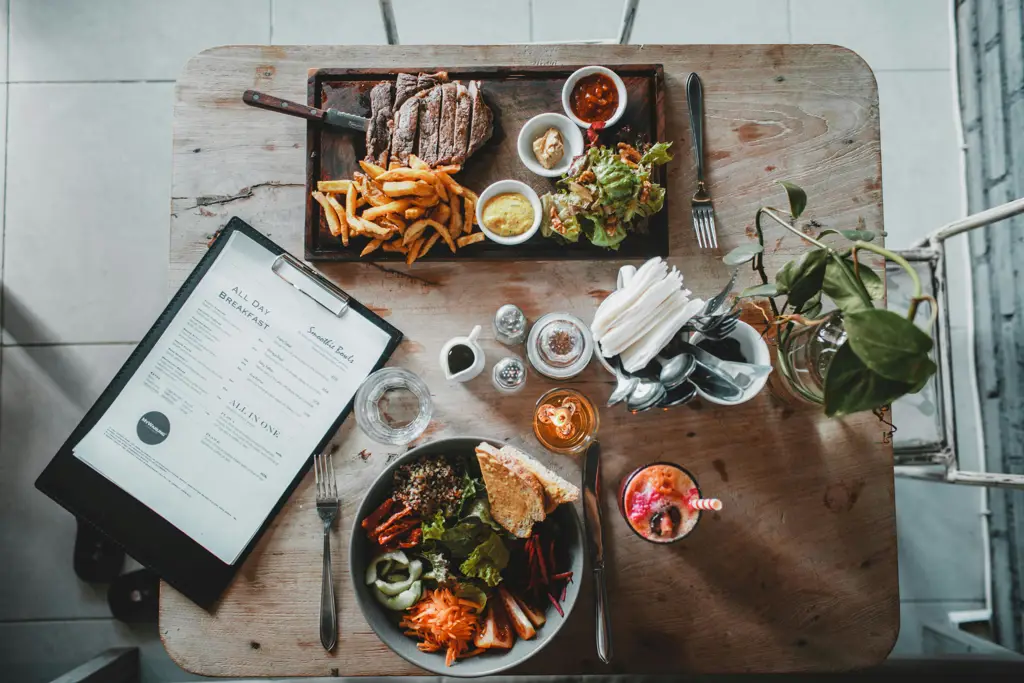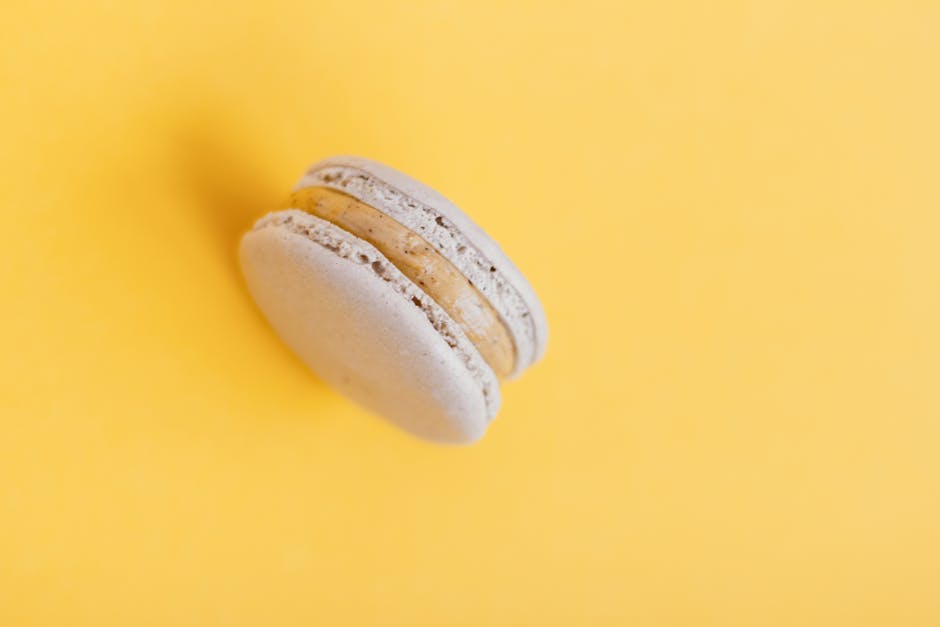Steak frites, a seemingly simple dish of pan-seared steak and crisp-cut fries, boasts a surprisingly rich and complex history. While pinpointing its exact origin is difficult, its popularity is undeniably linked to the evolution of French cuisine and its global influence. The dish’s core components—beef and potatoes—have long held significant cultural importance across various societies. Potatoes, introduced to Europe from the Americas in the 16th century, slowly gained acceptance, becoming a staple food in the 18th and 19th centuries, particularly among the working classes. Similarly, beef, depending on the cut and preparation, has long symbolized status and celebration in various cultures. The marriage of these two elements, however, is most strongly associated with French bistros and brasseries, where it became a classic, affordable, and satisfying meal.
The rise of steak frites as a culinary icon coincides with the growth of Parisian bistros in the late 19th and early 20th centuries. These establishments offered a casual, yet refined, dining experience, accessible to a wider range of society than the more formal restaurants. Steak frites, with its straightforward preparation and hearty portions, perfectly embodied this philosophy. Its enduring appeal lies in its simplicity, allowing for variations in preparation based on personal preference and regional variations. The quality of the ingredients, however, remains paramount, emphasizing the importance of a well-marbled cut of beef and properly rendered potatoes. While variations exist—some recipes call for béarnaise sauce, others for a simple vinaigrette—the core elements remain constant.
Today, steak frites transcends its French origins to enjoy global popularity. It’s estimated that millions of servings are consumed worldwide each year, a testament to its enduring appeal. Statistics on its exact consumption are difficult to pin down, but its presence on menus from casual eateries to upscale restaurants across continents speaks volumes. Its adaptability is a key factor in its success: the dish can be easily customized to accommodate various dietary preferences and regional tastes. From the classic bistro version to modern interpretations incorporating different cuts of beef or unique fry preparations, steak frites continues to evolve while staying true to its fundamental principles. This recipe aims to guide you through creating the perfect version, balancing simplicity with excellence in both the steak and the frites.
Ingredients and Measurements
Creating the perfect Steak Frites requires careful attention to ingredient quality and precise measurements. The success of your dish hinges on selecting the right cuts of meat and potatoes, and using the appropriate quantities of seasonings and finishing oils.
For the steak, we recommend using a cut known for its marbling and tenderness. A 1-inch thick ribeye (approximately 10-12 ounces) per person is ideal. Look for steaks with good marbling – this translates to a more flavorful and juicy final product. Avoid overly lean cuts as they can become dry during cooking. If ribeye is unavailable, a New York strip or a thick-cut sirloin are excellent alternatives. Ensure the steak is at room temperature for at least 30 minutes before cooking for even cooking.
For the frites, we’ll be using russet potatoes, also known as Idaho potatoes. These potatoes have a high starch content, crucial for creating crispy, fluffy fries. You’ll need approximately 2 pounds of russet potatoes, peeled and cut into 1/2-inch thick batons. Consistency in the size of your fries is key to ensuring even cooking. Aim for uniformity to prevent some fries from burning before others are cooked through.
Now let’s discuss the seasonings and oils. For the steak, simplicity is key. A generous amount of kosher salt and freshly cracked black pepper is all you need. Start with approximately 1 teaspoon of kosher salt and 1/2 teaspoon of black pepper per steak, adjusting to your taste. Don’t be afraid to season generously, but avoid over-salting. For the fries, we’ll need vegetable oil for frying. Use a high-smoke-point oil like canola or peanut oil. You’ll need around 3 cups of oil for a double-fry method. This will allow for achieving maximum crispiness.
Finally, we need some finishing touches. A knob of unsalted butter (approximately 2 tablespoons) will be used to baste the steak during the final moments of cooking, adding richness and flavor. For serving, consider a few sprigs of fresh rosemary or thyme for garnish, adding a touch of aromatic freshness. Aioli or a classic béarnaise sauce complement the steak frites beautifully, although they are optional additions. Remember to adjust quantities based on the number of servings.
Important Note: The quantities listed above are suggestions and can be adjusted based on personal preferences and the number of servings. Always ensure your ingredients are fresh and high quality for optimal results.
Equipment Preparation
Before you even think about touching that beautiful steak, ensuring you have the right equipment, properly prepared, is paramount to achieving perfect steak frites. This seemingly minor step significantly impacts the final result, contributing to both the steak’s sear and the fries’ crispness.
Let’s start with the star of the show: your pan. A heavy-bottomed cast iron skillet is ideal for achieving a deep, even sear on your steak. Its heat retention is unparalleled, ensuring consistent cooking and preventing hot spots. If you don’t own a cast iron skillet, a heavy-bottomed stainless steel pan will work, but you may need to adjust your cooking time slightly. Before you begin, thoroughly clean and dry your pan. Any residual moisture will hinder the searing process.
Next, you’ll need a good quality thermometer. An instant-read thermometer is absolutely essential for ensuring your steak cooks to your desired doneness. Avoid relying solely on visual cues, as they can be misleading. A reliable thermometer will provide accurate temperature readings, allowing you to achieve the perfect level of doneness every time. Make sure your thermometer is calibrated and ready to use before you start cooking.
For the fries, you’ll need at least two large bowls. One will be for soaking the cut potatoes and the other for draining them. A large, sturdy cutting board is also crucial, preventing slippage and ensuring safe and efficient potato preparation. A sharp knife, preferably a chef’s knife, will make cutting the potatoes into even, consistent fries much easier and faster. Unevenly cut fries will cook unevenly, resulting in some being soggy and others burnt.
Consider your oil for frying. Choose a high-smoke-point oil such as peanut oil, canola oil, or vegetable oil. You’ll need approximately 2 quarts (1.9 liters) of oil for a decent batch of fries. This amount ensures adequate immersion for even cooking. Use a deep, heavy-bottomed pot or Dutch oven for frying. Never fill the pot more than halfway full with oil to prevent spills and potential burns. A deep-fry thermometer is highly recommended for monitoring the oil temperature accurately, ensuring consistent frying and preventing burning.
Finally, don’t forget your servingware. Have a plate ready for your perfectly seared steak and a separate serving dish for your golden-brown fries. Consider using paper towels to absorb excess oil from the fries before serving. Having everything organized beforehand will streamline the cooking process and prevent frantic searching for utensils while your steak rests.
By carefully preparing your equipment in advance, you’ll set the stage for a flawless steak frites experience. Remember, attention to detail in this initial stage translates directly to the quality of your final dish.
Steak Preparation (e.g., Patting Dry, Seasoning)
Before you even think about touching a hot pan, proper steak preparation is key to achieving that perfect sear and juicy interior. This stage is often overlooked, but it’s the foundation for a truly exceptional steak frites experience. We’ll be focusing on a classic ribeye, but these techniques apply to most cuts.
First, pat your steak completely dry. This is crucial. Moisture on the surface of the steak will prevent a proper sear, resulting in a steamed rather than seared exterior. Use paper towels to thoroughly absorb any excess moisture. Don’t be shy; really work the paper towels across the entire surface of the steak.
Next, comes the seasoning. Many people believe in elaborate spice rubs, but for a classic steak frites, simple is best. The star of the show should be the beef itself. We’ll use kosher salt and freshly ground black pepper. For a 1-inch thick, 12-ounce ribeye steak, I recommend using about 1 teaspoon of kosher salt and ½ teaspoon of freshly ground black pepper. The amount will need to be adjusted depending on the size and thickness of your steak.
Don’t be afraid to be generous with the salt. Salt is essential not only for flavor but also for drawing out moisture, which then helps with browning. Apply the salt evenly across the entire surface of the steak, pressing it gently into the meat. This ensures that the salt penetrates the surface and seasons the steak thoroughly.
Follow the salt with the freshly ground black pepper. Again, distribute it evenly. Freshly ground pepper offers a superior flavor and aroma compared to pre-ground pepper. The pepper adds a subtle spice that complements the savory beef.
Let the steak rest at room temperature for at least 30 minutes, and up to 1 hour. This allows the steak to come to a more uniform temperature, leading to more even cooking. This step is often skipped, but it significantly improves the final result. A consistently cooked steak is a happy steak.
Optional: Add a touch of garlic powder or onion powder. If you want to add a subtle layer of flavor complexity, a pinch of garlic powder or onion powder can be a nice addition. However, remember that these should only complement the natural beef flavor, not overpower it. Start with a small amount and adjust to your taste.
Once the steak has rested, it’s ready for the sizzling pan. Remember, all that careful preparation will be rewarded with a perfectly cooked steak frites, a testament to your attention to detail. Proper preparation truly makes all the difference.
Frites Preparation (e.g., Cutting, Soaking)
The quality of your frites is just as crucial as the quality of your steak. Achieving perfectly crisp, fluffy frites requires careful attention to detail, starting with the potato selection and preparation. For the best results, choose starchy potatoes like Russet, Idaho, or Yukon Gold. These varieties contain higher starch content, resulting in fluffier interiors and crispier exteriors.
Begin by peeling 2 pounds of potatoes. While some chefs prefer leaving the skins on for added texture and nutrients, peeling ensures consistent cooking and browning. After peeling, thoroughly rinse the potatoes under cold running water to remove any excess starch. This step is critical to prevent sticking and ensure even cooking.
Now comes the cutting. Consistency is key here. Aim for uniformly sized frites, approximately ½ inch by ½ inch by 3-4 inches long. Using a mandoline slicer is highly recommended for achieving precise and even cuts. If using a knife, be meticulous and patient to ensure consistent thickness. Unevenly cut frites will cook unevenly, resulting in some being soggy and others burnt.
Once cut, immediately submerge the frites in a large bowl of cold water. This soaking step is perhaps the most important aspect of making perfect frites. Soaking the potatoes for at least 30 minutes, and preferably up to 2 hours, helps to remove excess starch. This starch removal prevents the frites from sticking together during frying and contributes to a crispier final product. Change the water at least once during the soaking period to ensure maximum starch removal. Do not skip this step!
After soaking, thoroughly drain the frites and pat them completely dry with clean kitchen towels or paper towels. Excess moisture is the enemy of crispness. Make sure the frites are as dry as possible before proceeding to the frying stage. Any remaining moisture will lead to steaming rather than frying, resulting in soggy frites. You can even go the extra mile and let them air dry for 15-20 minutes before frying for optimal results.
Finally, before frying, consider a light dusting of potato starch or flour. This adds another layer of crispness, helping to create a beautifully golden-brown exterior. Don’t overdo it, though – a light coating is sufficient. Now you’re ready to move onto the double-frying process, which will ensure perfectly cooked frites with a fluffy inside and a wonderfully crisp exterior.
Cooking the Steak (e.g., Searing, Resting)
Now that your steak is patted dry and seasoned perfectly, it’s time to tackle the star of the show: the cooking process. We’ll focus on achieving a beautiful sear and a perfectly cooked interior, resulting in a juicy and flavorful steak. For this recipe, we’ll assume you’re working with a 1.5-inch thick ribeye steak, but the principles apply to other cuts as well.
Searing the Steak: High heat is crucial for a good sear. We’ll use a heavy-bottomed skillet – cast iron is ideal – to maintain even heat distribution. Heat your skillet over high heat for at least 5 minutes, or until a drop of water evaporates instantly upon contact. Add 2 tablespoons of high-smoke-point oil, such as canola or grapeseed oil, to the hot skillet. Do not overcrowd the pan; if necessary, sear your steaks in batches.
Once the oil shimmers, carefully place your steak in the hot skillet. Avoid moving the steak for at least 2-3 minutes to allow a proper sear to develop. This creates a delicious crust and helps lock in the juices. After 2-3 minutes, use tongs to gently flip the steak. Sear the second side for another 2-3 minutes.
For a more flavorful crust, you can add a knob of butter (about 1 tablespoon) to the pan during the last minute of searing on each side. Tilt the pan slightly and use a spoon to baste the steak with the melted butter, allowing the flavorful browned bits (fond) to adhere to the steak. This step adds incredible depth of flavor.
Adjusting for Doneness: After searing, reduce the heat to medium-high or medium. Continue cooking the steak to your desired doneness, using a meat thermometer to ensure accuracy. Here’s a guideline:
- Rare: 125-130°F (52-54°C)
- Medium-Rare: 130-135°F (54-57°C)
- Medium: 135-140°F (57-60°C)
- Medium-Well: 140-145°F (60-63°C)
- Well-Done: 145°F+ (63°C+)
Remember that the steak will continue to cook slightly even after you remove it from the heat (carryover cooking). It’s better to slightly undercook the steak than overcook it.
Resting the Steak: Once the steak reaches your desired internal temperature, remove it from the skillet and place it on a wire rack set over a baking sheet or plate. Let the steak rest for at least 10-15 minutes before slicing. This allows the juices to redistribute throughout the meat, resulting in a more tender and flavorful steak. Cover loosely with foil to keep it warm.
Important Note: The cooking time will vary depending on the thickness of your steak and your stovetop’s heat output. Always use a meat thermometer to ensure your steak is cooked to your liking. Don’t be afraid to experiment and adjust cooking times as needed.
Cooking the Frites
Achieving perfectly crisp and fluffy steak frites requires a two-stage frying process, often referred to as double-frying. This method ensures the potatoes cook through completely while developing a wonderfully crunchy exterior. We’ll be using about 1kg (2.2 lbs) of russet potatoes, ideally peeled and cut into roughly 1cm (½ inch) thick batons. Consistency in size is crucial for even cooking; aim for uniformity as much as possible.
First, we need to parboil the potatoes. Place the cut potatoes in a large pot and cover them generously with cold water. Add 2 tablespoons of salt. Bring the water to a rolling boil, then reduce the heat and simmer for 8-10 minutes, or until the potatoes are just tender but not falling apart. Don’t overcook them at this stage; they should still offer a slight resistance when pierced with a fork. Drain the potatoes thoroughly and spread them out on a wire rack to cool completely. This allows the surface to dry, which is vital for achieving extra crispiness during frying.
For the first fry, we’ll use a generous amount of oil – about 1 liter (4 cups) of vegetable oil or a high-smoke-point oil like peanut oil, in a large, heavy-bottomed pot or deep fryer. Heat the oil to 150°C (300°F). Use a thermometer to monitor the oil temperature accurately; this is paramount for even cooking and preventing burning. Carefully add the potatoes to the hot oil in batches, ensuring not to overcrowd the pot. Fry for about 4-5 minutes, or until the potatoes are slightly softened and have begun to lose their raw edges. Remove the potatoes with a slotted spoon and set them aside on a wire rack to drain excess oil.
Once the first batch is complete, allow the oil temperature to return to 150°C (300°F) before frying the next batch. Repeat this process until all the potatoes are pre-fried. This initial fry cooks the interior of the frites. Now, for the second fry – the crucial step for achieving ultimate crispiness. Raise the oil temperature to 180-190°C (350-375°F). Carefully add the pre-fried potatoes back into the hot oil in batches, again avoiding overcrowding. Fry for 2-3 minutes, or until they are golden brown and beautifully crisp. Avoid over-crowding the pot; this will lower the oil temperature and result in soggy frites.
Once the frites are perfectly golden and crisp, remove them from the oil and immediately transfer them to a wire rack or paper towel-lined plate to drain any excess oil. While still hot, season generously with sea salt. Freshly ground sea salt is preferred as it enhances the flavor and texture. You can also add other seasonings such as smoked paprika, garlic powder, or even a touch of cayenne pepper for a spicy kick, but remember to keep it simple to let the potato flavor shine through. Serve immediately alongside your perfectly cooked steak.
Recommendations for the Perfect Steak Frites
To achieve truly exceptional Steak Frites, meticulous attention to detail is key throughout the entire process. Start with high-quality ingredients; a well-marbled cut of beef, such as ribeye, New York strip, or sirloin, will make a significant difference in the final flavor and tenderness. Similarly, choose firm, starchy potatoes for your frites – russets or Yukon Golds work best. Don’t skimp on the good quality oil for frying.
Regarding cooking techniques, ensure your steak is brought to room temperature before searing. This allows for even cooking and prevents a tough exterior. For the frites, double-frying is recommended for achieving a perfectly crisp exterior and fluffy interior. Remember to allow the oil to reach the correct temperature between fries. Overcrowding the pan will lower the temperature and result in soggy fries. Finally, season generously; salt and freshly ground black pepper are essential, but don’t hesitate to experiment with other herbs and spices.
Serving suggestions are crucial to elevate the Steak Frites experience. A classic presentation involves serving the steak sliced thinly against the grain, alongside a generous portion of perfectly golden-brown frites. Consider offering a selection of dipping sauces to complement the meal. Aioli, béarnaise sauce, or even a simple Dijon mustard can add delightful flavor contrasts. Garnish with fresh parsley or chives for a touch of elegance. For a truly authentic experience, serve immediately after cooking, ensuring the steak is still juicy and the fries are at their crispiest.
Storage of leftover steak and fries should be done separately. Allow the steak to cool completely before storing in an airtight container in the refrigerator for up to 3 days. Fries are best enjoyed fresh but can be stored in an airtight container at room temperature for a few hours or refrigerated for up to 1 day. Reheating is not recommended as it will compromise the texture and quality. To reheat the steak, consider gently pan-frying or grilling until warmed through, but avoid overcooking.
Complementary dishes can enhance the overall dining experience. A simple green salad with a light vinaigrette provides a refreshing contrast to the richness of the steak and fries. Alternatively, a creamy mushroom sauce or a robust red wine reduction can be poured over the steak for an added layer of flavor. A side of grilled asparagus or sautéed green beans also offer a healthy and flavorful counterpoint.
Nutritional Information (approximate per serving, based on a 6-ounce steak and 1 cup of fries): Calories: 800-1000; Fat: 60-70g; Protein: 40-50g; Carbohydrates: 50-70g; Sodium: Varies significantly depending on seasoning and sauces. Note: This nutritional information is an estimate and can vary depending on the specific ingredients and portion sizes used. For precise nutritional information, consult a nutrition calculator using the exact ingredients and quantities in your recipe.
Important Note: Always ensure your cooking oils are at the correct temperature to prevent burning and achieve optimal results. Use caution when working with hot oil. Adjust portion sizes and ingredients according to your dietary needs and preferences.





